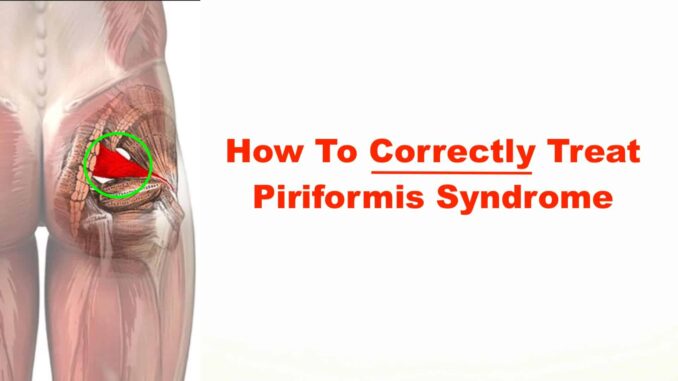
Introduction: Piriformis syndrome is a condition that affects many people, yet it remains relatively unknown compared to other musculoskeletal buttock pain relief. This condition is often misdiagnosed as sciatica, making it essential for individuals and healthcare professionals to understand the differences. In this article, we will explore piriformis syndrome in detail, covering its causes, symptoms, diagnosis, and treatment options.
What is Piriformis Syndrome?
The piriformis muscle is a small, pear-shaped muscle located in the buttocks, near the hip joint. Its primary function is to assist in the rotation of the thigh. Piriformis syndrome occurs when the piriformis muscle irritates or compresses the sciatic nerve, which runs from the lower back down the back of each leg. This compression can result in various symptoms, including pain, tingling, and numbness in the buttocks and down the leg, mimicking the symptoms of sciatica.
Causes of Piriformis Syndrome
Piriformis syndrome can be caused by a variety of factors, including:
- Muscle Overuse or Tightness: Overuse or tightness of the piriformis muscle due to activities such as running, cycling, or prolonged sitting can lead to irritation of the sciatic nerve.
- Trauma: An injury to the piriformis muscle or surrounding area, such as a fall or direct trauma, can trigger piriformis syndrome.
- Anatomical Variations: Some individuals may have anatomical variations that make them more prone to piriformis syndrome, such as the sciatic nerve passing through the piriformis muscle instead of underneath it.
- Muscle Spasms: Muscle spasms in the piriformis muscle can cause compression of the sciatic nerve and lead to symptoms of the syndrome.
Symptoms of Piriformis Syndrome
The symptoms of piriformis syndrome can vary from person to person but often include:
- Pain: Individuals with piriformis syndrome typically experience pain in the buttocks that may radiate down the back of the thigh. The pain can be sharp, burning, or aching.
- Tingling and Numbness: Many people report tingling and numbness in the buttocks and down the leg, often following the path of the sciatic nerve.
- Difficulty Sitting: Sitting for extended periods can exacerbate the symptoms, making it uncomfortable for those with piriformis syndrome.
- Pain during Activities: Activities that engage the piriformis muscle, like walking or climbing stairs, may worsen the symptoms.
Diagnosis
Diagnosing piriformis syndrome can be challenging because its symptoms mimic those of other conditions, such as herniated discs and sciatica. To accurately diagnose piriformis syndrome, a healthcare provider may perform the following:
- Physical Examination: A thorough physical examination will be conducted to assess symptoms and rule out other potential causes.
- Imaging Studies: X-rays, MRI, and CT scans may be ordered to visualize the piriformis muscle and surrounding structures.
- Electromyography (EMG): This test measures electrical activity in the muscles and can help determine if the piriformis muscle is compressing the sciatic nerve.
Treatment Options
The management of piriformis syndrome typically involves a combination of conservative and medical approaches:
- Rest: Reducing activities that exacerbate symptoms and avoiding prolonged sitting can provide relief.
- Physical Therapy: Stretching and strengthening exercises prescribed by a physical therapist can help improve muscle flexibility and strength, alleviating pressure on the sciatic nerve.
- Medications: Over-the-counter pain relievers, muscle relaxants, and anti-inflammatory medications may be recommend to manage pain and muscle spasms.
- Injections: Corticosteroid injections into the buttock pain relief can help reduce inflammation and alleviate symptoms.
- Surgery: In rare cases when other treatments fail, surgical intervention to release the piriformis muscle may be consider.
Prevention and Lifestyle Changes
While it’s not always possible to prevent piriformis syndrome, the following measures may help reduce the risk:
- Regular stretching and strengthening exercises, particularly those that target the piriformis muscle.
- Proper warm-up and cool-down routines before physical activities.
- Maintaining good posture and avoiding prolonged sitting.
- Using ergonomic chairs and equipment if you have a sedentary job.
Conclusion
Piriformis syndrome is a painful and often misunderstood condition that can significantly impact an individual’s quality of life. Early diagnosis and appropriate treatment are essential for managing the symptoms and preventing further complications. By understanding the causes, symptoms, diagnosis, and treatment options for buttock pain relief, individuals and healthcare professionals can work together to provide relief and improve the overall well-being of those affected by this condition.
